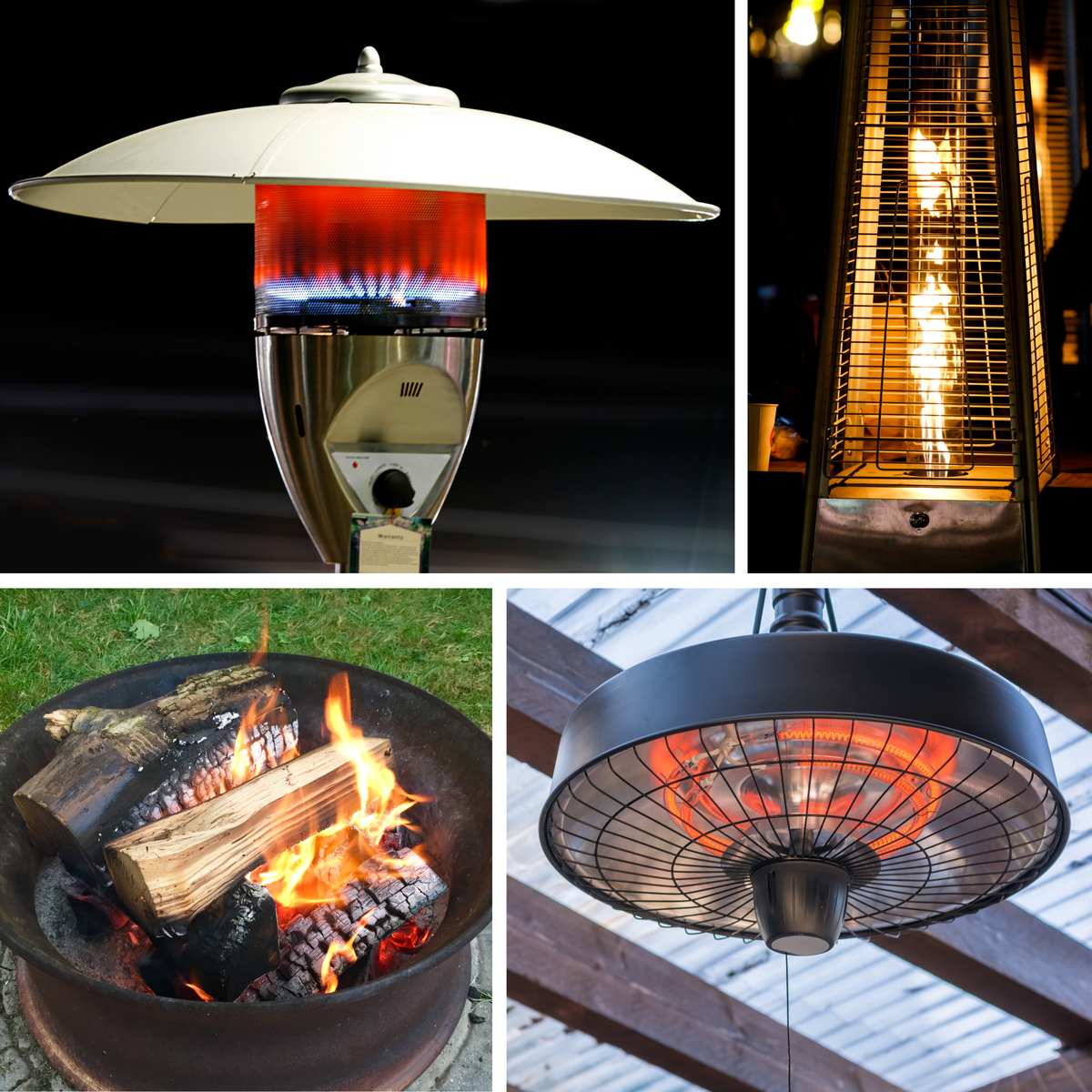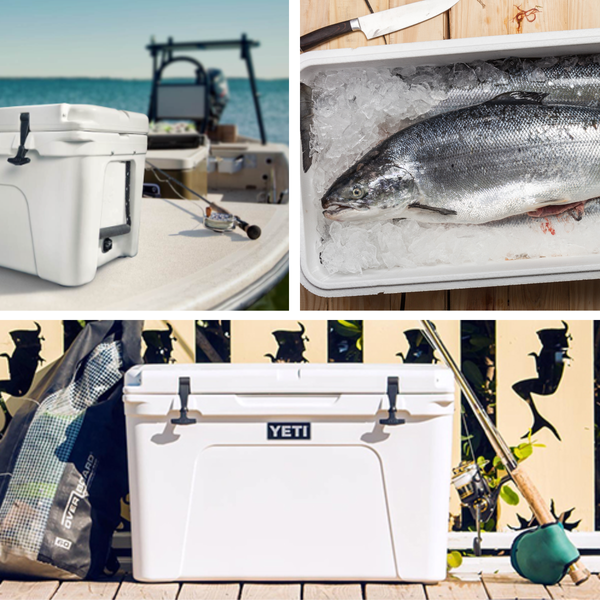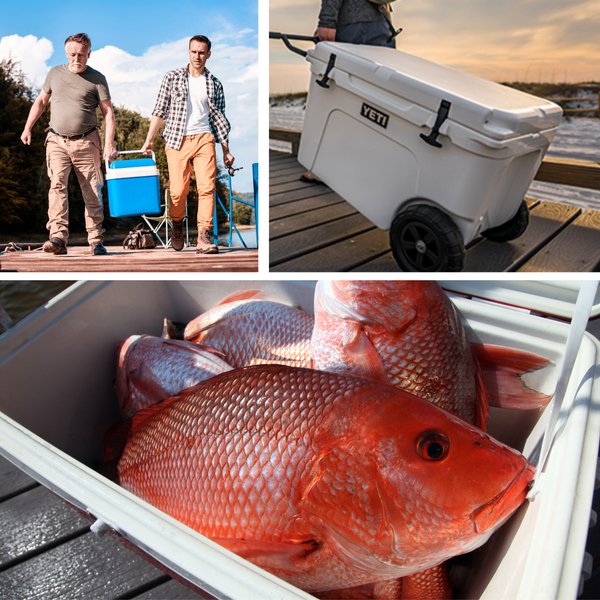Outdoor living spaces have become extensions of our homes, offering a place to relax, entertain, and enjoy the fresh air. But as the sun sets and temperatures drop, the need for a reliable heat source becomes apparent. Two popular options for extending the comfort of your outdoor space into the cooler hours are patio heaters and fire pits. This article will delve into the pros and cons of each to help you determine which is the best fit for your backyard oasis.
Key Takeaways:
- Understand the differences between patio heaters and fire pits in terms of heat output, maintenance, and ambiance.
- Learn about the safety features and temperature control associated with both heating options.
- Discover practical considerations such as space requirements, fuel types, and cost implications for each option.
Heat Output: Patio Heaters vs. Fire Pits
When it comes to heat output, both patio heaters and fire pits can provide warmth on chilly nights. Patio heaters tend to offer a more concentrated heat source, often making them suitable for a larger area. Gas models, including those that use propane or natural gas, are known for their high heat output, capable of warming a substantial outdoor living space. Electric patio heaters, while sometimes less powerful, offer the convenience of plugging into a standard outlet.
Fire pits, on the other hand, create a cozy atmosphere with open flames that can emit a significant amount of heat. Wood burning fire pits, in particular, can generate a lot of warmth, but their heat distribution is often less uniform than that of patio heaters. The heat from a fire pit is more localized, which means you'll need to be closer to the fire to stay warm.

Maintenance and Upkeep: What to Expect
Maintenance costs and the required upkeep are important considerations when choosing an outdoor heating solution. Patio heaters are generally low maintenance, especially electric models, which do not produce embers or ash. Gas heaters may require regular maintenance to ensure the gas lines and connections are functioning safely.
Fire pits, especially wood burning ones, involve more upkeep. They produce ash and embers that need to be regularly cleaned out to maintain safety and performance. Propane fire pits offer a cleaner alternative, with less maintenance than wood burning options, but they still require some attention to keep the gas components in good working order.
Safety Features: Ensuring a Secure Environment
Safety is paramount when it comes to any outdoor heating option. Patio heaters are designed with safety features such as tip-over protection and automatic shut-off in case of overheating. They are also less likely to emit smoke, which can be a concern for those with respiratory issues.
Fire pits, while offering a beautiful focal point, come with the inherent risk of open flames. It's crucial to have a fire extinguisher or water source nearby and to never leave the fire unattended. Additionally, fire pits can pose a risk for flying embers, which could be a fire hazard if not properly contained.
Temperature Control: Adjusting Your Comfort Level
One of the advantages of an outdoor heater is the ability to control the temperature. Many gas and electric patio heaters come with adjustable settings, allowing you to dial in the desired level of warmth. This feature is particularly useful for commercial space where customer comfort is a priority.
Fire pits do not typically offer the same level of temperature control. The heat from a fire pit is dependent on the size of the fire and the fuel type used. While you can add or remove wood to increase or decrease the heat, it's not as precise as the controls found on patio heaters.

Space Considerations: Fitting into Your Outdoor Space
The size of your outdoor space can greatly influence whether a patio heater or a fire pit is more suitable. Patio heaters, including wall-mounted options, are ideal for smaller areas where space is at a premium. They can be strategically placed to provide warmth without taking up valuable floor space.
Fire pits require a larger area to ensure safety and accommodate seating around the fire. They become a natural gathering spot, but they also need a significant amount of clearance from any structures or flammable materials to prevent accidents.
Environmental Impact: Considering Eco-Friendly Outdoor Heating
When weighing outdoor heating solutions, it's crucial to consider the environmental impact of your choice. A propane fire pit and outdoor heaters, while convenient, often rely on fossil fuels, which can contribute to greenhouse gas emissions. On the other hand, some fire pits can use renewable resources like wood, but they still release smoke and particulates into the air. For those environmentally conscious, electric patio heaters or models that use bioethanol may be a better fit, as they tend to have a lower carbon footprint. It's important to research and select products that align with your eco-friendly values while still providing the warmth you desire.
In the quest for greener outdoor heating options, technology has made strides with innovations like solar-powered heaters and energy-efficient designs. These alternatives can help reduce your carbon footprint and are particularly appealing for those looking to heat a large area without the guilt of high energy consumption. Moreover, some regions may offer incentives or rebates for choosing eco-friendly heating solutions, which can help offset initial costs. Always check local regulations and data rates for energy consumption to ensure that your choice not only warms your outdoor space but also protects the planet.

Entertainment and Functionality: Beyond Just Heating
When selecting between a patio heater and a fire pit, consider the entertainment and functionality aspects they bring to your outdoor space. A fire pit, with its open flame, offers a unique ambiance and roasting capability that can be a focal point for social gatherings. It allows guests to huddle around, toast marshmallows, and engage in intimate conversations, creating memorable experiences. The open flame provides a natural light source and a rustic charm that can be very different from the more modern designs of patio heaters.
Patio heaters, especially wall-mounted or freestanding models, offer a different kind of functionality. They are typically less interactive than fire pits but can heat a larger area more uniformly, making them ideal for bigger gatherings where guests are spread out. While they may lack the roasting capability, they provide consistent warmth without the smoke and ash cleanup associated with fire pits. For those who prioritize ease and a clean aesthetic, patio heaters can be an excellent choice for year-round outdoor use, offering warmth with a simple flick of a switch. Whether you're looking for more inspiration for your next event or practical heat sources for everyday comfort, both options have their unique benefits.
Fuel Type and Accessibility: What Works for You?
The fuel type is a critical factor in your decision-making process. Electric patio heaters are incredibly convenient, requiring only an electrical outlet to operate. Gas heaters, whether propane or natural gas, offer a higher heat output but need a gas source, which may not be readily available in all outdoor spaces.
Fire pits can run on wood, propane, or natural gas. Wood burning fire pits offer the traditional experience of a fire, complete with the ability to roast marshmallows and enjoy the crackling sound of burning logs. Propane and natural gas fire pits provide a cleaner burn with less smoke and no need to store wood.

Aesthetic Appeal: Enhancing Your Outdoor Ambiance
The visual appeal of your outdoor heating solution can also play a significant role in your decision. Fire pits serve as a stunning focal point and can be designed to match the aesthetic of your outdoor living space. They offer the charm of a traditional fireplace and the ability to roast marshmallows, which is a delightful bonus for many.
Patio heaters have a very different designs, often more functional than decorative. However, they can still be stylish and blend seamlessly into your outdoor decor. They provide light and warmth without the smoke and maintenance of a fire pit.
Year-Round Use: Which Option Extends Your Seasons?
If you're looking to use your outdoor space year-round, consider the climate you live in and the heat source's effectiveness. Patio heaters can be more efficient in colder temperatures, as they can produce enough heat to combat the chill and are not affected by wind as much as fire pits.
Fire pits can be enjoyable in milder climates but may not provide enough heat to be comfortable in the heart of winter. They are also more susceptible to weather conditions, as rain or snow can dampen your firewood and make it difficult to start a fire.
Cost Implications: Budgeting for Your Heat Source
The initial cost and ongoing expenses are important to consider. Electric patio heaters are generally less expensive to purchase and operate, as electricity tends to be more affordable than other fuel types. Gas heaters may have a higher upfront cost, but natural gas can be a cost-effective option if you have access to a gas line.
Fire pits can vary widely in price, depending on the materials and design. The cost of fuel, whether it's wood or gas, should also be factored into the overall expense. Wood can be relatively cheap, but it requires storage space and regular replenishment.

Personal Preference: What Suits Your Lifestyle?
Ultimately, the choice between a patio heater and a fire pit comes down to personal preference. Consider how you like to spend your time outdoors, the level of maintenance you're willing to commit to, and the atmosphere you want to create. Both options have their merits and can enhance your outdoor living experience in different ways.
Summary
Deciding whether a patio heater is better than a fire pit involves weighing factors such as heat output, maintenance, safety, temperature control, space requirements, fuel type, aesthetic appeal, seasonal use, and cost. Patio heaters offer convenience, safety features, and temperature control, making them suitable for smaller spaces and year-round use. Fire pits provide a traditional, cozy atmosphere and can be a beautiful centerpiece for your outdoor space but require more upkeep and are less effective in extreme cold. Your choice will ultimately reflect your lifestyle, preferences, and the specific needs of your outdoor space.
FAQ Section
Q: Can patio heaters be used in covered areas?
A: Yes, some patio heaters are designed for use in covered areas, but it's essential to follow the manufacturer's guidelines regarding clearance and ventilation to ensure safety.
Q: Are fire pits safe to use on wooden decks?
A: Fire pits can be used on wooden decks with caution and proper heat-resistant barriers. However, it's crucial to check local regulations and manufacturer recommendations to ensure safe operation.
Q: How much does it cost to run a patio heater compared to a fire pit?
A: The cost to run a patio heater varies depending on the power source and local utility rates. Electric heaters typically cost less to operate than gas models. Fire pits' costs depend on the fuel type, with wood generally being less expensive than propane or natural gas, though prices can fluctuate based on availability and season.










